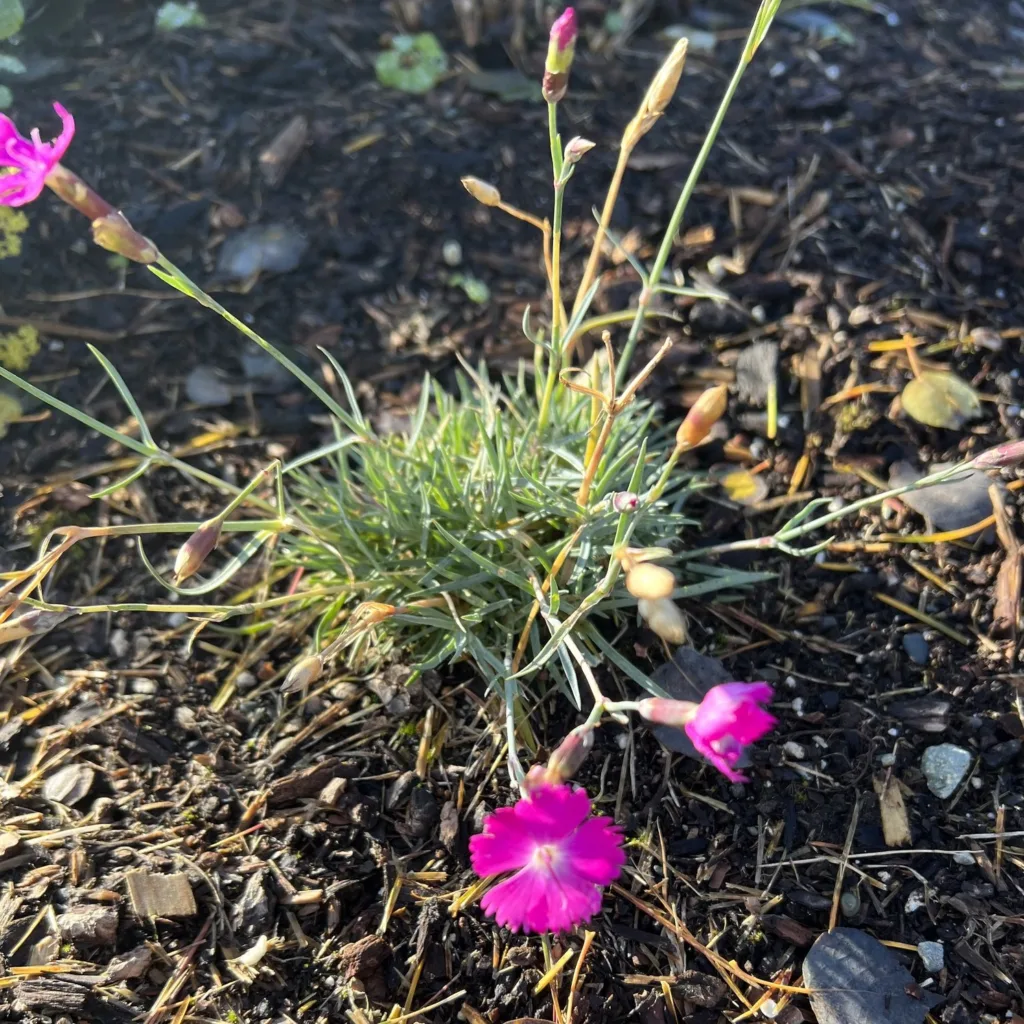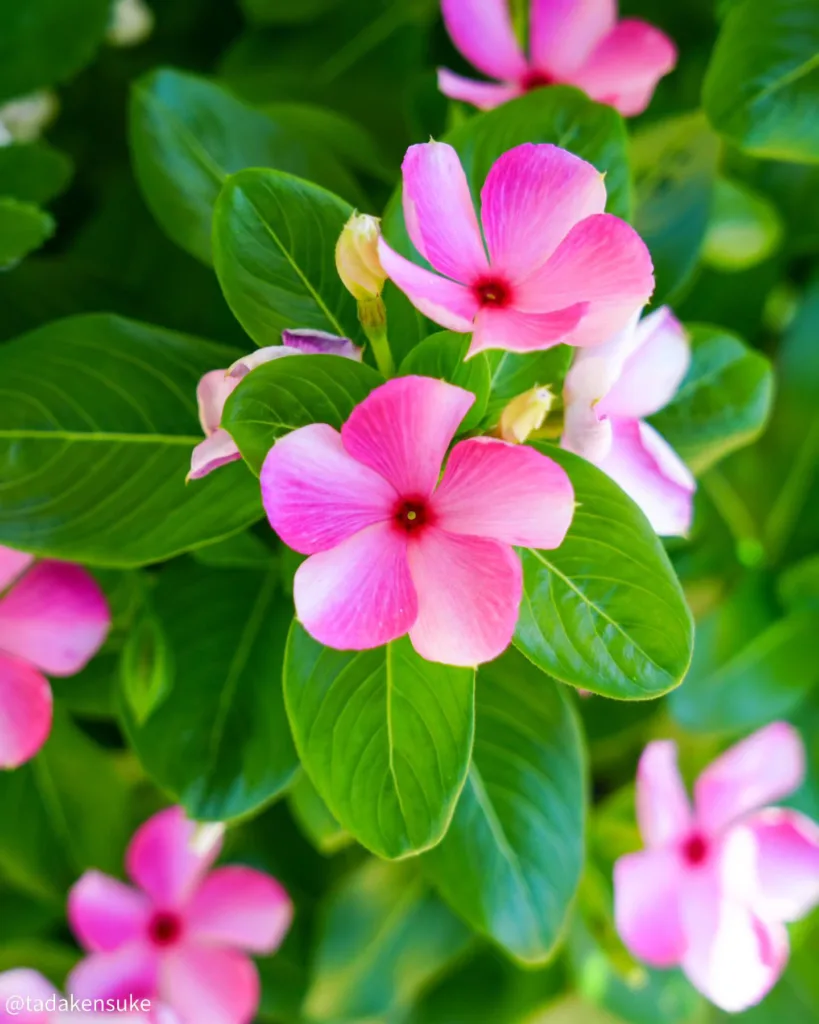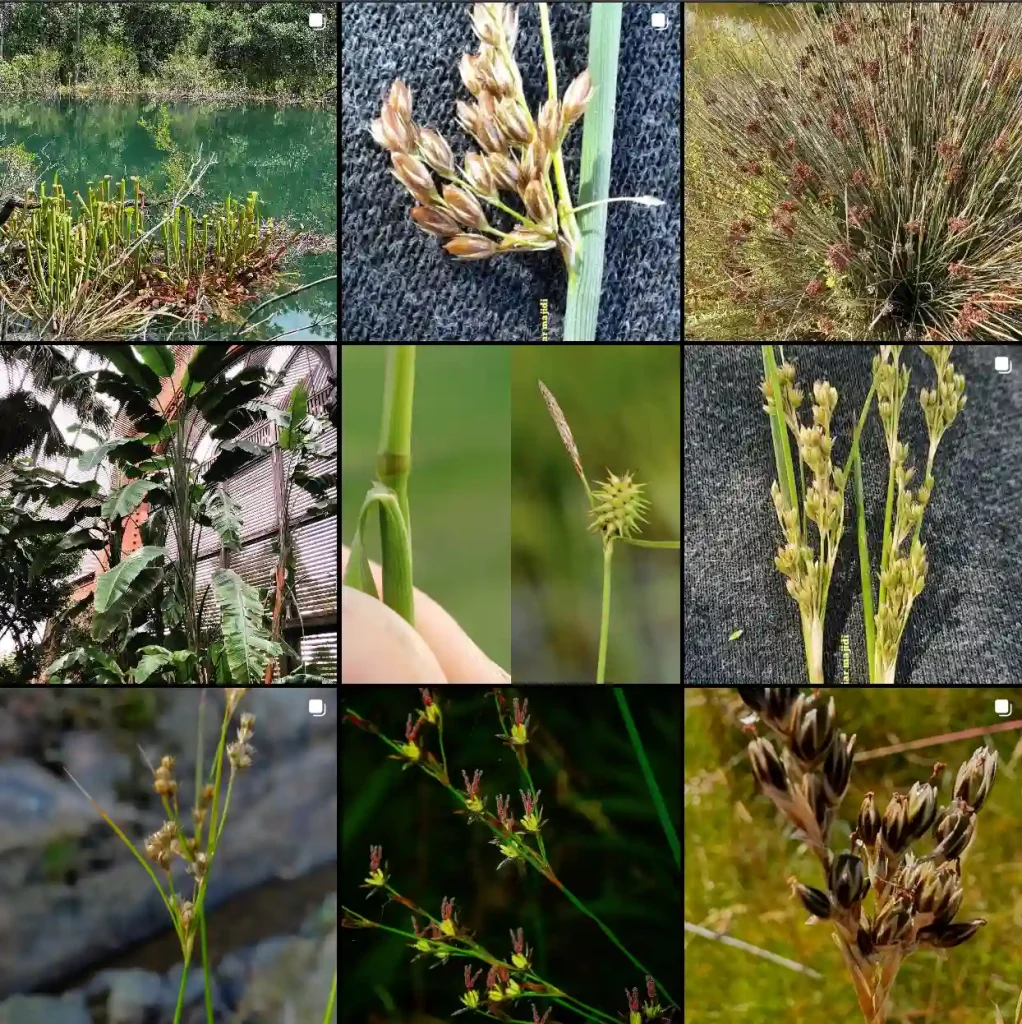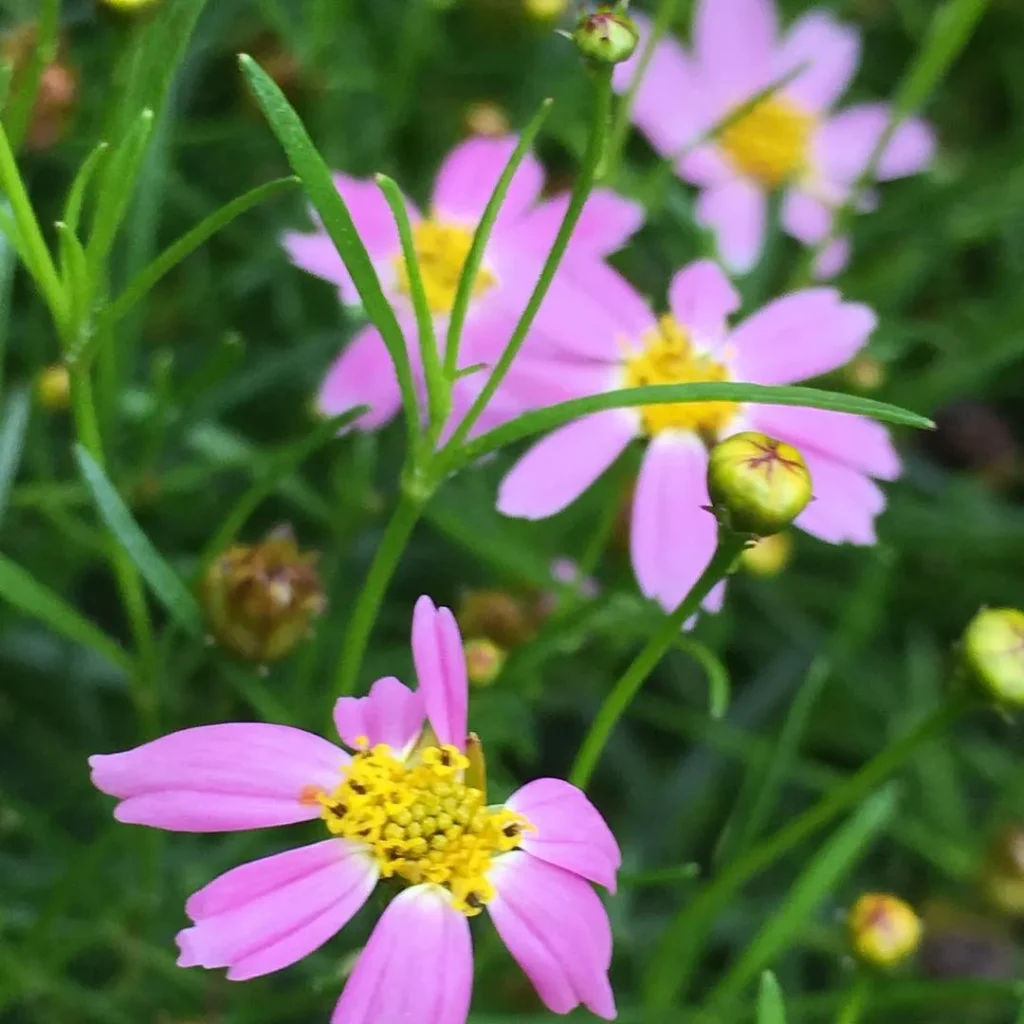
Discovering the Heliconiaceae Family: A Journey into the World of Heliconia
The Heliconiaceae family, primarily known for its vibrant and exotic Heliconia genus, holds a special place in my heart. As a plant enthusiast, I have always been drawn to unique flora, and Heliconia captures my attention with its stunning colors and fascinating structures. This article is my personal exploration of the Heliconiaceae family and the Heliconia genus, sharing insights, experiences, and tips that I hope will inspire fellow plant lovers.
Understanding the Heliconiaceae Family
The Heliconiaceae family comprises a group of tropical plants that thrive in the humid, lush environments of Central and South America, as well as the Pacific Islands. This family is primarily recognized for its striking flowers and large, decorative leaves. One of the standout features of Heliconiaceae is its close relationship to the banana family, Musaceae, which is evident in their similar leaf structures and overall growth habits.
What fascinates me most about this family is how it represents the diversity of tropical flora. With over 200 species of Heliconia, there’s a wide variety of shapes, sizes, and colors to admire. The brilliant hues of their flowers attract not only human admirers but also a host of pollinators, particularly hummingbirds, which play a vital role in their reproduction.
The Heliconia Genus: A Closer Look
Heliconia is undoubtedly the star of the Heliconiaceae family. Each species within this genus brings its unique charm and characteristics. I remember the first time I encountered Heliconia rostrata, commonly known as the lobster claw plant. The vibrant red and yellow bracts, resembling a lobster’s claw, immediately drew my attention. Its unique shape and color made it an instant favorite in my garden.
As I delved deeper into the Heliconia genus, I discovered the Heliconia bihai. Its rich orange flowers create a stunning contrast against the lush green leaves, making it a captivating addition to any tropical garden. Each variety of Heliconia has its distinct flowering period and growing requirements, making it essential for gardeners to choose the right species for their climate and conditions.
Species List
- Heliconia abaloi G.Morales
- Heliconia acuminata A.Rich.
- Heliconia adflexa (Griggs) Standl.
- Heliconia aemygdiana Burle-Marx
- Heliconia albicosta (G.S.Daniels & F.G.Stiles) L.Andersson
- Heliconia angelica Abalo & G.Morales
- Heliconia angusta Vell.
- Heliconia apparicioi Barreiros
- Heliconia arrecta W.J.Kress & Betancur
- Heliconia atratensis Abalo & G.Morales
- Heliconia atropurpurea G.S.Daniels & F.G.Stiles
- Heliconia aurantiaca Verschaff.
- Heliconia aurea G.Rodr.
- Heliconia auriculata Barreiros
- Heliconia badilloi Abalo & G.Morales
- Heliconia barryana W.J.Kress
- Heliconia beckneri R.R.Sm.
- Heliconia bella W.J.Kress
- Heliconia berguidoi R.Flores, C.Black & A.Ibáñez
- Heliconia berriziana Abalo & G.Morales
- Heliconia berryi Abalo & G.Morales
- Heliconia bihai (L.) L.
- Heliconia bourgaeana Petersen
- Heliconia brachyantha L.Andersson
- Heliconia brenneri Abalo & G.Morales
- Heliconia burleana Abalo & G.Morales
- Heliconia calatheiphylla G.S.Daniels & F.G.Stiles
- Heliconia caquetensis Abalo & G.Morales
- Heliconia carajaensis Barreiros
- Heliconia caribaea Lam. Plant FAQs: Heliconia Caribaea
- Heliconia carmelae Abalo & G.Morales
- Heliconia chartacea Lane ex Barreiros
- Heliconia chiapensis C.Gut.Báez
- Heliconia chrysocraspeda Abalo & G.Morales
- Heliconia clinophila R.R.Sm.
- Heliconia colgantea R.R.Sm. ex G.S.Daniels & F.G.Stiles
- Heliconia collinsiana Griggs
- Heliconia combinata Abalo & G.Morales
- Heliconia cordata L.Andersson
- Heliconia crassa Griggs
- Heliconia cristata Barreiros
- Heliconia cucullata W.J.Kress & L.Andersson
- Heliconia curtispatha Petersen
- Heliconia danielsiana W.J.Kress
- Heliconia darienensis L.Andersson
- Heliconia dasyantha K.Koch & C.D.Bouché
- Heliconia densiflora Verl.
- Heliconia dielsiana Loes.
- Heliconia donstonea W.J.Kress & Betancur
- Heliconia episcopalis Vell.
- Heliconia estherae Abalo & G.Morales
- Heliconia estiletioides Abalo & G.Morales
- Heliconia excelsa L.Andersson
- Heliconia farinosa Raddi
- Heliconia faunorum W.J.Kress & L.Andersson
- Heliconia fernandezii Abalo & G.Morales
- Heliconia × flabellata Abalo & G.Morales
- Heliconia foreroi Abalo & G.Morales
- Heliconia fragilis Abalo & G.Morales
- Heliconia fredberryana W.J.Kress
- Heliconia fugax L.Andersson
- Heliconia gaiboriana Abalo & G.Morales
- Heliconia gigantea W.J.Kress & Betancur
- Heliconia gilbertiana Abalo & G.Morales
- Heliconia gloriosa Abalo & G.Morales
- Heliconia gracilis G.S.Daniels & F.G.Stiles
- Heliconia griggsiana L.B.Sm.
- Heliconia harlingii L.Andersson
- Heliconia hirsuta L.f.
- Heliconia holmquistiana Abalo & G.Morales
- Heliconia huilensis Abalo & G.Morales
- Heliconia ignescens G.S.Daniels & F.G.Stiles
- Heliconia imbricata (Kuntze) Baker
- Heliconia impudica Abalo & G.Morales
- Heliconia indica Lam.
- Heliconia intermedia Abalo & G.Morales
- Heliconia irrasa R.R.Sm.
- Heliconia juliani Barreiros
- Heliconia juruana Loes.
- Heliconia kautzkiana Emygdio & E.Santos
- Heliconia lanata (P.S.Green) W.J.Kress
- Heliconia lankesteri Standl.
- Heliconia lasiorachis L.Andersson
- Heliconia latispatha Benth. Plant FAQs: Heliconia Latispatha
- Heliconia laufao W.J.Kress
- Heliconia laxa Abalo & G.Morales
- Heliconia lentiginosa Abalo & G.Morales
- Heliconia librata Griggs
- Heliconia lingulata Ruiz & Pav.
- Heliconia litana W.J.Kress
- Heliconia longa (Griggs) H.J.P.Winkl.
- Heliconia longiflora R.R.Sm.
- Heliconia lophocarpa G.S.Daniels & F.G.Stiles
- Heliconia lourteigiae Emygdio & E.Santos
- Heliconia lozanoi Abalo & G.Morales
- Heliconia luciae Barreiros
- Heliconia lutea W.J.Kress
- Heliconia lutheri W.J.Kress
- Heliconia maculata W.J.Kress
- Heliconia magnifica W.J.Kress
- Heliconia × mantenensis B.R.Silva, Senna V. & Emygdio
- Heliconia marginata (Griggs) Pittier
- Heliconia mariae Hook.f.
- Heliconia markiana Abalo & G.Morales
- Heliconia mathiasiae G.S.Daniels & F.G.Stiles
- Heliconia meridensis Klotzsch
- Heliconia metallica Planch. & Linden ex Hook.
- Heliconia mincana Abalo & G.Morales
- Heliconia montana Abalo & G.Morales
- Heliconia monteverdensis G.S.Daniels & F.G.Stiles
- Heliconia mooreana R.R.Sm.
- Heliconia mucilagina Abalo & G.Morales
- Heliconia mucronata Barreiros
- Heliconia mutisiana Cuatrec.
- Heliconia nariniensis Abalo & G.Morales
- Heliconia necrobracteata W.J.Kress
- Heliconia × nickeriensis Maas & de Rooij
- Heliconia nigripraefixa Dodson & A.H.Gentry
- Heliconia nitida Abalo & G.Morales
- Heliconia nubigena L.Andersson
- Heliconia nutans Woodson
- Heliconia obscura Dodson & A.H.Gentry
- Heliconia obscuroides L.Andersson
- Heliconia oleosa Abalo & G.Morales
- Heliconia orthotricha L.Andersson
- Heliconia osaensis Cufod.
- Heliconia paka A.C.Sm.
- Heliconia paludigena Abalo & G.Morales
- Heliconia papuana W.J.Kress
- Heliconia pardoi Abalo & G.Morales
- Heliconia pastazae L.Andersson
- Heliconia peckenpaughii Abalo & G.Morales
- Heliconia pendula Wawra
- Heliconia penduloides Loes.
- Heliconia peteriana Abalo & G.Morales
- Heliconia × plagiotropa Abalo & G.Morales
- Heliconia platystachys Baker
- Heliconia pogonantha Cufod.
- Heliconia pruinosa Loes.
- Heliconia pseudoaemygdiana Emygdio & E.Santos
- Heliconia psittacorum L.f.
- Heliconia ramonensis G.S.Daniels & F.G.Stiles
- Heliconia × rauliniana Barreiros
- Heliconia regalis L.Andersson
- Heliconia reptans Abalo & G.Morales
- Heliconia reticulata (Griggs) H.J.P.Winkl.
- Heliconia revoluta (Griggs) Standl.
- Heliconia rhodantha Abalo & G.Morales
- Heliconia richardiana Miq.
- Heliconia rigida Abalo & G.Morales
- Heliconia riopalenquensis Dodson & A.H.Gentry
- Heliconia rivularis Emygdio & E.Santos
- Heliconia robertoi Abalo & G.Morales
- Heliconia robusta Pax
- Heliconia rodriguensis Aristeg.
- Heliconia rodriguezii F.G.Stiles
- Heliconia rostrata Ruiz & Pav.
- Heliconia samperiana W.J.Kress & Betancur
- Heliconia sanctae-theresae Abalo & G.Morales
- Heliconia santaremensis Barreiros
- Heliconia sarapiquensis G.S.Daniels & F.G.Stiles
- Heliconia scarlatina Abalo & G.Morales
- Heliconia schiedeana Klotzsch
- Heliconia schumanniana Loes.
- Heliconia sclerotricha Abalo & G.Morales
- Heliconia secunda R.R.Sm.
- Heliconia sessilis W.J.Kress
- Heliconia signa-hispanica Abalo & G.Morales
- Heliconia solomonensis W.J.Kress
- Heliconia spathocircinata Aristeg.
- Heliconia spiralis Abalo & G.Morales
- Heliconia spissa Griggs
- Heliconia standleyi J.F.Macbr.
- Heliconia stella-maris Abalo & G.Morales
- Heliconia stilesii W.J.Kress
- Heliconia stricta Huber Plant FAQs: Heliconia Stricta
- Heliconia subulata Ruiz & Pav.
- Heliconia sucrei Barreiros
- Heliconia tacarcunae L.Andersson
- Heliconia talamancana G.S.Daniels & F.G.Stiles
- Heliconia tandayapensis Abalo & G.Morales
- Heliconia tenebrosa J.F.Macbr.
- Heliconia terciopela W.J.Kress & Betancur
- Heliconia thomasiana W.J.Kress
- Heliconia timothei L.Andersson
- Heliconia titanum W.J.Kress & Betancur
- Heliconia tortuosa Griggs
- Heliconia trichocarpa G.S.Daniels & F.G.Stiles
- Heliconia triflora Barreiros
- Heliconia umbrophila G.S.Daniels & F.G.Stiles
- Heliconia uxpanapensis C.Gut.Báez
- Heliconia vaginalis Benth.
- Heliconia vellerigera Poepp.
- Heliconia velutina L.Andersson
- Heliconia venusta Abalo & G.Morales
- Heliconia veracruzensis C.Gut.Báez
- Heliconia villosa Klotzsch
- Heliconia virginalis Abalo & G.Morales
- Heliconia wagneriana Petersen Plant FAQs: Heliconia Wagneriana
- Heliconia willisiana Abalo & G.Morales
- Heliconia wilsonii G.S.Daniels & F.G.Stiles
- Heliconia xanthovillosa W.J.Kress
- Heliconia zebrina Plowman, W.J.Kress & H.Kenn.
Growing Heliconia: Tips and Techniques
Growing Heliconia can be a rewarding experience, but it does come with its challenges. Over the years, I’ve learned some valuable tips that have helped me cultivate these beautiful plants successfully.
Selecting the Right Location
Heliconias thrive in warm, humid conditions with plenty of sunlight. When choosing a location for planting, I always consider the amount of direct sunlight the area receives. Ideally, they prefer partial shade to full sun, depending on the specific species. For instance, Heliconia stricta tolerates full sun, while others like Heliconia chartacea prefer some shade during the hottest parts of the day.
Soil and Watering
These plants flourish in well-draining soil rich in organic matter. I usually mix compost with native soil to create a nutrient-rich environment. As for watering, Heliconias love moisture but don’t tolerate soggy roots. I make sure to water regularly, especially during dry spells, while ensuring the soil drains well.
Fertilizing for Growth
To promote healthy growth and vibrant blooms, I use a balanced fertilizer every few months. This practice has made a significant difference in the flowering of my Heliconia plants. I typically apply a slow-release fertilizer in early spring to support growth during the growing season.
Common Pests and Diseases
Despite their hardiness, Heliconia plants can be susceptible to certain pests, such as aphids and spider mites. I always keep an eye out for signs of infestation and treat them promptly with insecticidal soap or neem oil. Additionally, fungal diseases can occur if the plants are kept too wet. Ensuring good air circulation around the plants has helped me prevent these issues.
The Ecological Importance of Heliconia
Beyond their aesthetic appeal, Heliconia plays a vital role in their ecosystems. The relationship between Heliconia and hummingbirds is a prime example of coevolution. The bright, tubular flowers of Heliconia are perfectly adapted to be pollinated by these birds. As they feed on the nectar, the hummingbirds inadvertently transfer pollen from one flower to another, facilitating reproduction. This mutual relationship highlights the importance of Heliconia in supporting local biodiversity.
Conclusion: A Passion for Heliconiaceae
My journey into the world of Heliconiaceae, particularly the Heliconia genus, has been nothing short of enchanting. From their stunning flowers to their ecological significance, these plants have earned their place in my heart and garden. As I continue to explore the diversity within this family, I hope to share my passion with others, encouraging them to appreciate the beauty and complexity of these remarkable tropical plants. Whether you’re a seasoned gardener or just starting, Heliconia offers a vibrant addition to any collection.
If i die, water my plants!



